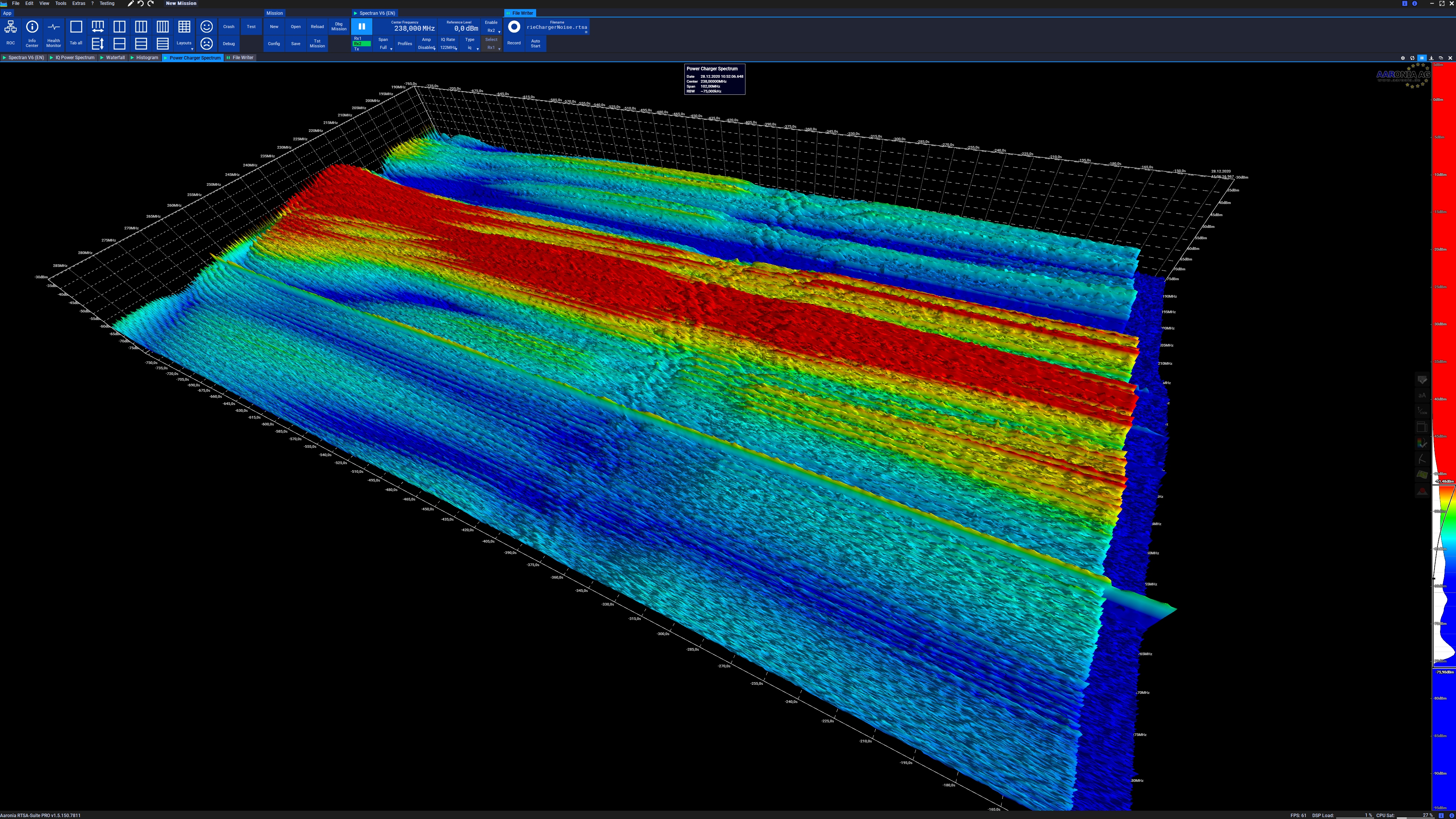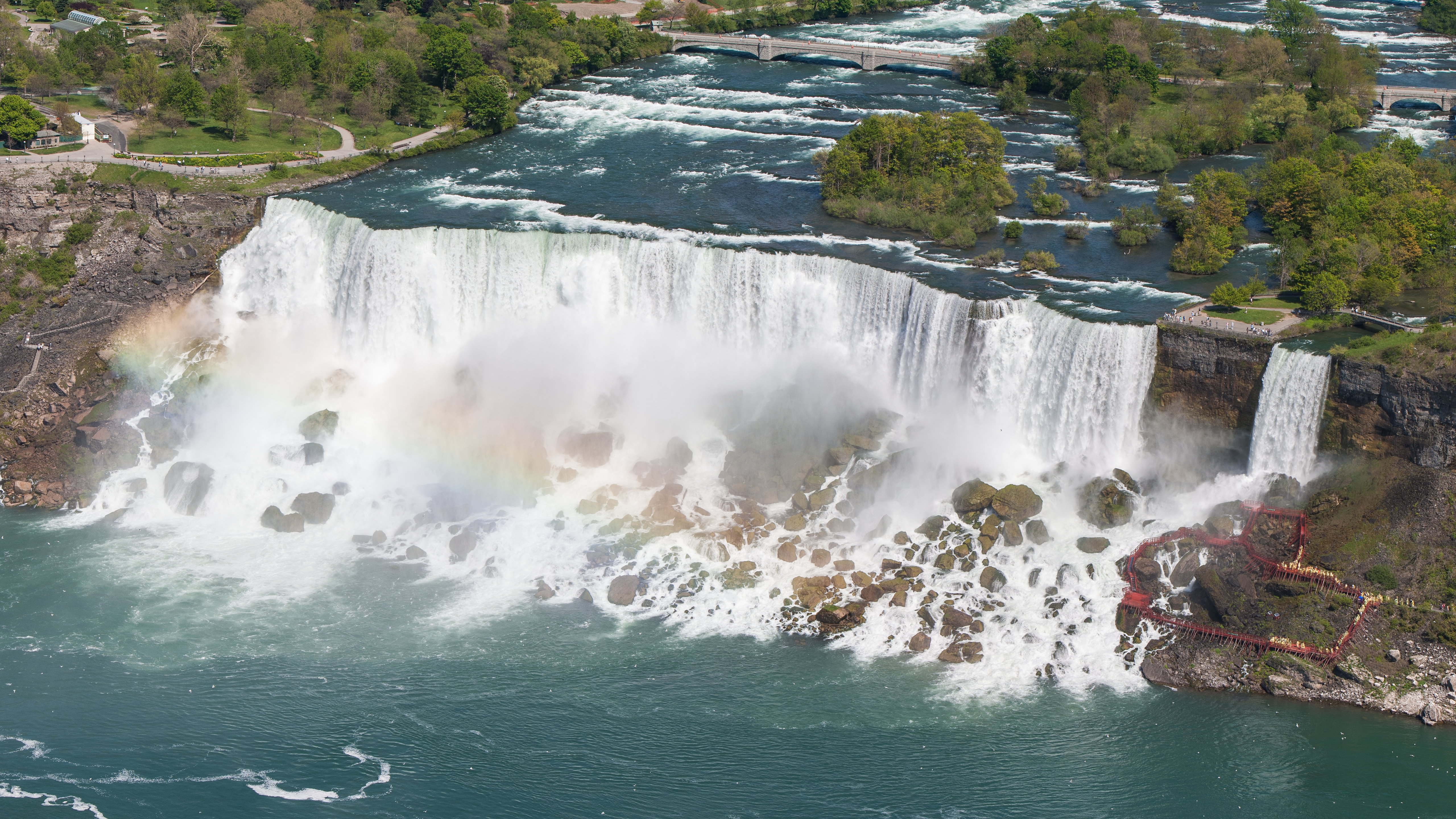 |
Waterfall Plot
Waterfall plots are often used to show how two-dimensional phenomena change over time. A three-dimensional ''spectral waterfall plot'' is a plot in which multiple curves of data, typically spectra, are displayed simultaneously. Typically the curves are staggered both across the screen and vertically, with "nearer" curves masking the ones behind. The result is a series of "mountain" shapes that appear to be side by side. The waterfall plot is often used to show how two-dimensional information changes over time or some other variable such as rotational speed. Waterfall plots are also often used to depict ''spectrograms'' or ''cumulative spectral decay'' (CSD). Uses * The results of spectral density estimation, showing the spectrum of the signal at successive intervals of time. * The delayed response from a loudspeaker or listening room produced by impulse response testing or MLSSA. * Spectra at different engine speeds when testing engines. See also * Loudspeaker acoustics ... [...More Info...] [...Related Items...] OR: [Wikipedia] [Google] [Baidu] |
 |
Spectrogram
A spectrogram is a visual representation of the spectrum of frequencies of a signal as it varies with time. When applied to an audio signal, spectrograms are sometimes called sonographs, voiceprints, or voicegrams. When the data are represented in a 3D plot they may be called '' waterfall displays''. Spectrograms are used extensively in the fields of music, linguistics, sonar, radar, speech processing, seismology, ornithology, and others. Spectrograms of audio can be used to identify spoken words phonetically, and to analyse the various calls of animals. A spectrogram can be generated by an optical spectrometer, a bank of band-pass filters, by Fourier transform or by a wavelet transform (in which case it is also known as a scaleogram or scalogram). A spectrogram is usually depicted as a heat map, i.e., as an image with the intensity shown by varying the colour or brightness. Format A common format is a graph with two geometric dimensions: one axis represents time ... [...More Info...] [...Related Items...] OR: [Wikipedia] [Google] [Baidu] |
|
Waterfall Chart
A waterfall chart is a form of data visualization that helps in understanding the cumulative effect of sequentially introduced positive or negative values. These intermediate values can either be time based or category based. The waterfall chart is also known as a flying bricks chart or Mario chart (after the floating bricks in Nintendo's "Super Mario" games) due to the apparent suspension of columns (bricks) in mid-air. Often in finance, it will be referred to as a bridge. Waterfall charts were popularized by the strategic consulting firm McKinsey & Company in its presentations to clients. Complexity can be added to waterfall charts with multiple total columns and values that cross the axis. Increments and decrements that are sufficiently extreme can cause the cumulative total to fall above and below the axis at various points. Intermediate subtotals, depicted with whole columns, can be added to the graph between floating columns. Overview The waterfall is known as a bridge o ... [...More Info...] [...Related Items...] OR: [Wikipedia] [Google] [Baidu] |
|
 |
Sound Production Technology
In physics, sound is a vibration that propagates as an acoustic wave through a transmission medium such as a gas, liquid or solid. In human physiology and psychology, sound is the ''reception'' of such waves and their ''perception'' by the brain. Only acoustic waves that have frequencies lying between about 20 Hz and 20 kHz, the audio frequency range, elicit an auditory percept in humans. In air at atmospheric pressure, these represent sound waves with wavelengths of to . Sound waves above 20 kHz are known as ultrasound and are not audible to humans. Sound waves below 20 Hz are known as infrasound. Different animal species have varying hearing ranges, allowing some to even hear ultrasounds. Definition Sound is defined as "(a) Oscillation in pressure, stress, particle displacement, particle velocity, etc., propagated in a medium with internal forces (e.g., elastic or viscous), or the superposition of such propagated oscillation. (b) Auditory s ... [...More Info...] [...Related Items...] OR: [Wikipedia] [Google] [Baidu] |
|
Broadcast Engineering
Broadcast engineering or radio engineering is the field of electrical engineering, and now to some extent computer engineering and information technology, which deals with radio and television broadcasting. Audio engineering and RF engineering are also essential parts of broadcast engineering, being their own subsets of electrical engineering. Broadcast engineering involves both the studio and transmitter aspects (the entire airchain), as well as remote broadcasts. Every station has a broadcast engineer, though one may now serve an entire station group in a city. In small media markets the engineer may work on a contract basis for one or more stations as needed. Duties Modern duties of a broadcast engineer include maintaining broadcast automation systems for the studio and automatic transmission systems for the transmitter plant. There are also important duties regarding radio towers, which must be maintained with proper lighting and painting. Occasionally a station's eng ... [...More Info...] [...Related Items...] OR: [Wikipedia] [Google] [Baidu] |
|
|
Audio Engineering
Audio most commonly refers to sound, as it is transmitted in signal form. It may also refer to: Sound *Audio signal, an electrical representation of sound * Audio frequency, a frequency in the audio spectrum *Digital audio, representation of sound in a form processed and/or stored by computers or digital electronics *Audio, audible content (media) in audio production and publishing * Semantic audio, extraction of symbols or meaning from audio * Stereophonic audio, method of sound reproduction that creates an illusion of multi-directional audible perspective * Audio equipment Entertainment * AUDIO (group), an American R&B band of 5 brothers formerly known as TNT Boyz and as B5 * ''Audio'' (album), an album by the Blue Man Group * ''Audio'' (magazine), a magazine published from 1947 to 2000 * Audio (musician), British drum and bass artist * "Audio" (song), a song by LSD *"Audios", a song by Black Eyed Peas from ''Elevation'' Computing * HTML audio, identified by the tag See ... [...More Info...] [...Related Items...] OR: [Wikipedia] [Google] [Baidu] |
|
|
Plots (graphics)
Plot or Plotting may refer to: Art, media and entertainment * Plot (narrative), the connected story elements of a piece of fiction Music * ''The Plot'' (album), a 1976 album by jazz trumpeter Enrico Rava * The Plot (band), a band formed in 2003 Other * ''Plot'' (film), a 1973 French-Italian film * ''Plotting'' (video game), a 1989 Taito puzzle video game, also called Flipull * ''The Plot'' (video game), a platform game released in 1988 for the Amstrad CPC and Sinclair Spectrum * ''Plotting'' (non-fiction), a 1939 book on writing by Jack Woodford * ''The Plot'' (novel), a 2021 mystery by Jean Hanff Korelitz * The Plot (card game), a Patience-type card game * The Plot (film), a 2024 South Korean crime thriller film Graphics * Plot (graphics), a graphical technique for representing a data set * Plot (radar), a graphic display that shows all collated data from a ship's on-board sensors * Plot plan, a type of drawing which shows existing and proposed conditions for a given a ... [...More Info...] [...Related Items...] OR: [Wikipedia] [Google] [Baidu] |
|
 |
Loudspeaker Measurement
A loudspeaker (commonly referred to as a speaker or, more fully, a speaker system) is a combination of one or more speaker drivers, an enclosure, and electrical connections (possibly including a crossover network). The speaker driver is an electroacoustic transducer that converts an electrical audio signal into a corresponding sound. The driver is a linear motor connected to a diaphragm, which transmits the motor's movement to produce sound by moving air. An audio signal, typically originating from a microphone, recording, or radio broadcast, is electronically amplified to a power level sufficient to drive the motor, reproducing the sound corresponding to the original unamplified signal. This process functions as the inverse of a microphone. In fact, the ''dynamic speaker'' driver—the most common type—shares the same basic configuration as a dynamic microphone, which operates in reverse as a generator. The dynamic speaker was invented in 1925 by Edward W. Kellogg an ... [...More Info...] [...Related Items...] OR: [Wikipedia] [Google] [Baidu] |
|
Loudspeaker Acoustics
Loudspeaker acoustics is a subfield of acoustical engineering concerned with the design of loudspeakers. It focuses on the reproduction of sound and the parameters involved in doing so in actual equipment. Engineers measure the performance of drivers and complete speaker systems to characterize their behavior, often in an anechoic chamber, outdoors, or using time windowed measurement systems -- all to avoid including room effects (e.g., reverberation) in the measurements. Designers use models (from electrical filter theory) to predict the performance of drive units in different enclosures, now almost always based on the work of A N Thiele and Richard Small. Important driver characteristics are: *Frequency response *Off-axis response dispersion pattern, lobing *Sensitivity (dB SPL for 1 watt input) *Maximum power handling * Non-linear distortion * Colouration (i.e., more or less, delayed resonance). It is the performance of a loudspeaker/listening room combination that re ... [...More Info...] [...Related Items...] OR: [Wikipedia] [Google] [Baidu] |
|
 |
Waterfall Plot Of A Whistle
A waterfall is any point in a river or stream where water flows over a vertical drop or a series of steep drops. Waterfalls also occur where meltwater drops over the edge of a tabular iceberg or ice shelf. Waterfalls can be formed in several ways, but the most common method of formation is that a river courses over a top layer of resistant bedrock before falling onto softer rock, which erodes faster, leading to an increasingly high fall. Waterfalls have been studied for their impact on species living in and around them. Humans have had a distinct relationship with waterfalls since prehistory, travelling to see them, exploring and naming them. They can present formidable barriers to navigation along rivers. Waterfalls are religious sites in many cultures. Since the 18th century, they have received increased attention as tourist destinations, sources of hydropower, andparticularly since the mid-20th centuryas subjects of research. Definition and terminology A waterfall is g ... [...More Info...] [...Related Items...] OR: [Wikipedia] [Google] [Baidu] |